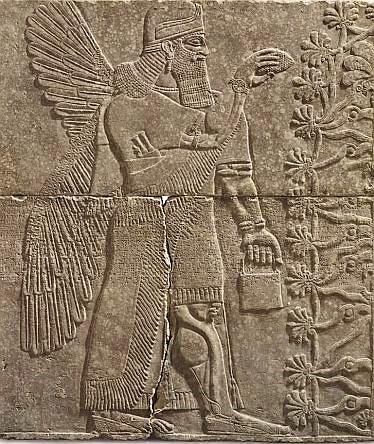3,000-year-old Assyrian art work expected to fetch more than $10M [View all]
A rare, 3,000-year-old sculpture is expected to fetch at least $10 million when it goes under the hammer at Christie's New York tomorrow. Billed as the finest example of Assyrian art to come on the market in decades, the solid slab of gypsum depicts a seven foot-tall deity. If the sale price exceeds $11.94 million, it will set a new world auction record for Assyrian art.
The sculpted panel was excavated in the 19th century from the ruins of the Northwest Palace in Nimrud, in present-day Iraq. In 1845, a young British adventurer called Austen Henry Layard arrived in Nimrud and began excavations. Since the collapse of the Assyrian Empire towards the end of the 7th century BC, the site had remained relatively untouched and he found a wealth of archaeological gems.
At the time, Iraq was part of the Ottoman Empire, and its Turkish rulers appear to have seen no problem in Layard stripping the region of its heritage. The Grand Vizier of the Ottoman Sultan wrote a letter to Stratford Canning, the then British ambassador, which -- in the words of its recipient -- authorized Layard to "excavate and export to your heart's content."
The Assyrian empire is referenced in the Old Testament, but its ruins had not been located. The monuments confirmed its existence and, to the missionaries, "proved that the Bible was real and not a work of fiction," said Max Bernheimer, Christie's international head of antiquities. "It fed the religious fervor of the time," he added.

https://www.cnn.com/style/article/assyrian-relief-panel/index.html
